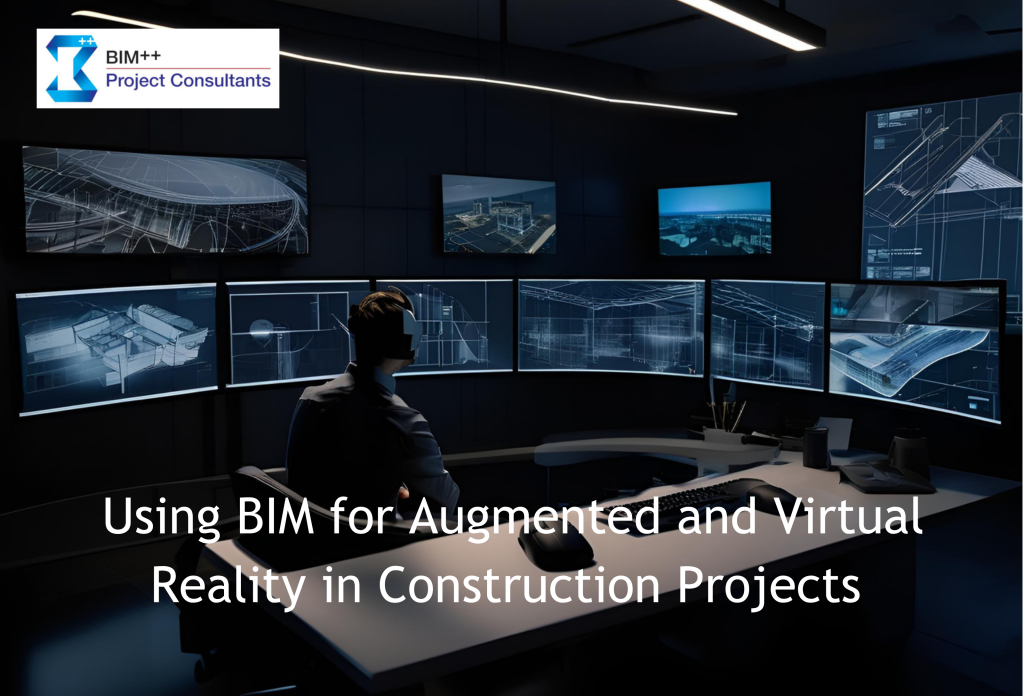
The integration of Building Information Modeling (BIM) with Augmented Reality (AR) and Virtual Reality (VR) is redefining how construction projects are designed, managed, and executed. These technologies are transforming traditional workflows, enabling immersive visualization, real-time collaboration, and enhanced project accuracy.
In this blog, we’ll explore how BIM serves as the foundation for AR and VR applications, the benefits of this integration, and real-world use cases in the construction industry.
What are AR and VR in Construction?
- Augmented Reality (AR): Overlays digital information, such as 3D models or data, onto the real-world environment using devices like smartphones, tablets, or AR glasses.
- Virtual Reality (VR): Creates a fully immersive digital environment where users can interact with BIM models using VR headsets.
When combined with BIM, AR and VR provide dynamic, interactive platforms for better project understanding and decision-making.
How BIM Powers AR and VR
BIM is a rich repository of data about a building’s geometry, materials, and systems. This data is seamlessly integrated into AR and VR platforms to create interactive and immersive experiences. Key steps include:
- Exporting BIM Models: BIM data is converted into compatible formats for AR and VR applications.
- Visualization Setup: BIM models are enriched with visual and spatial details to create realistic simulations.
- Interactive Features: Information such as material properties, schedules, and costs is layered onto the visual model for enhanced usability.
Applications of BIM with AR and VR in Construction Projects
1. Design Visualization and Client Presentations
- VR allows stakeholders to explore virtual walkthroughs of the project, experiencing the design as if it were already built.
- AR helps clients visualize proposed changes in real-world contexts, such as seeing how a new wall or fixture would look on-site.
2. Clash Detection and Coordination
AR and VR enable real-time visualization of BIM data to identify clashes between architectural, structural, and MEP elements.
- Teams can simulate different scenarios and resolve conflicts before construction begins.
3. On-Site Guidance and Inspections
- AR devices overlay BIM data onto the construction site, providing workers with accurate placement and assembly instructions.
- Site inspectors can compare the as-built conditions with the BIM model in real time, ensuring compliance.
4. Safety Training and Planning
- VR simulations create immersive environments for training workers on safety protocols, hazardous scenarios, and equipment handling.
- AR helps visualize safety zones, equipment locations, and escape routes directly on-site.
5. Facility Management and Maintenance
- Post-construction, AR and VR are used to overlay BIM data onto physical spaces for facility management.
- Maintenance teams can access detailed information about building systems, such as HVAC or electrical, by simply pointing a device at them.
6. Marketing and Stakeholder Engagement
- Immersive AR/VR experiences make project pitches more compelling, helping firms win clients and investors by showcasing projects in innovative ways.
Benefits of BIM-Driven AR and VR
1. Enhanced Collaboration
AR and VR create shared visual experiences that improve communication among architects, engineers, contractors, and clients.
2. Improved Decision-Making
Stakeholders can make more informed decisions by experiencing designs in realistic settings and identifying potential issues early.
3. Reduced Errors and Rework
By visualizing the project in 3D and simulating construction workflows, teams can prevent costly errors and delays.
4. Greater Client Satisfaction
Clients can fully understand the project’s design and provide feedback earlier, ensuring the final outcome aligns with their expectations.
5. Increased Efficiency
BIM-integrated AR and VR streamline planning, training, and on-site operations, saving time and resources.
6. Better Safety Standards
Immersive simulations and real-time guidance reduce risks and ensure a safer construction environment.
Challenges and How to Overcome Them
1. High Initial Costs
Investing in AR/VR equipment and BIM-compatible software can be expensive.
Solution: Start with pilot projects to demonstrate ROI and gradually scale adoption.
2. Technology Integration
Ensuring seamless compatibility between BIM models and AR/VR platforms can be challenging.
Solution: Use industry-standard formats like IFC and collaborate with experienced tech providers.
3. Training Requirements
Not all team members may be familiar with AR/VR technologies.
Solution: Provide comprehensive training programs and user-friendly interfaces.